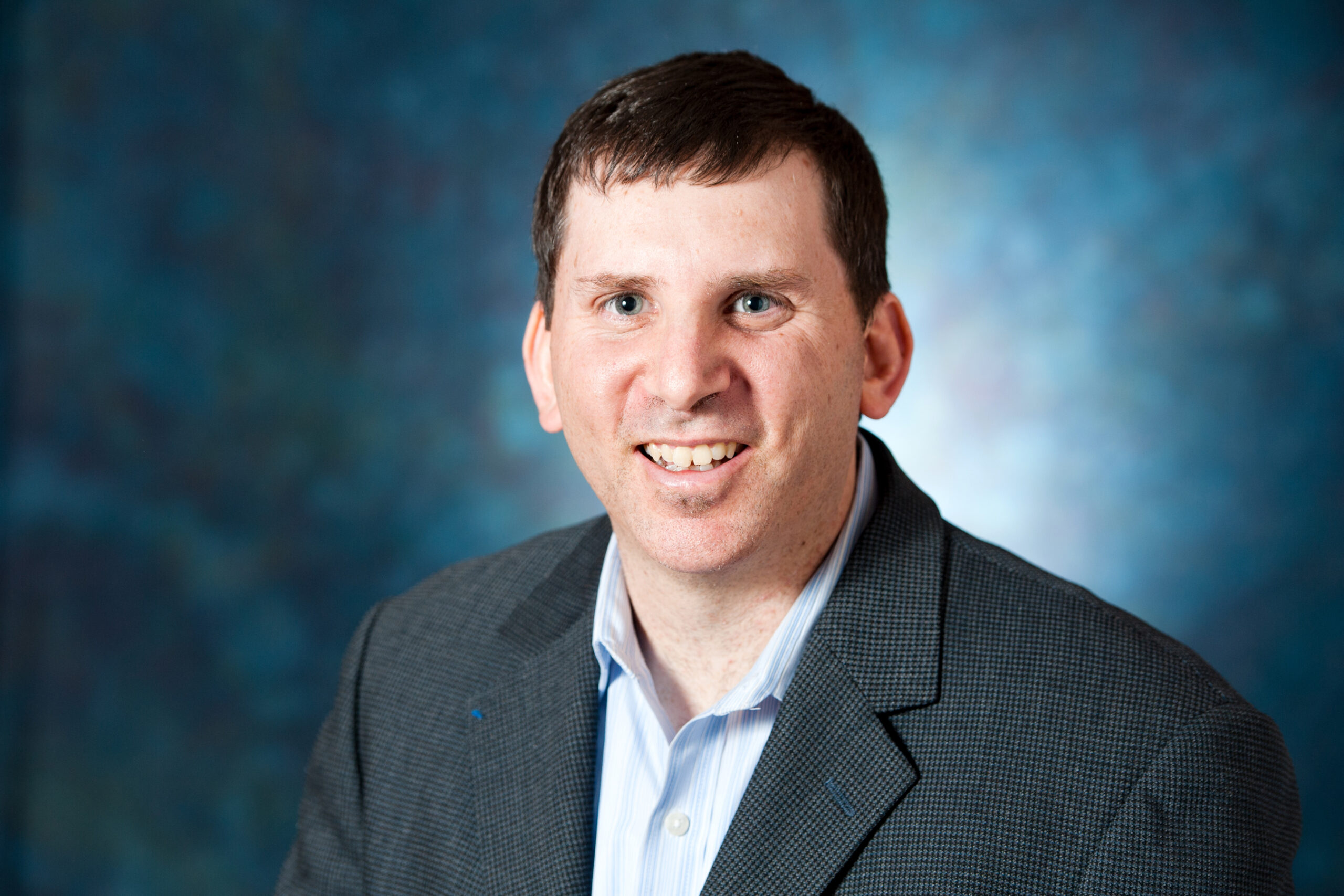Members of Bet Am Shalom in White Plains, N.Y., a few years ago, embarked on a quintessentially Reconstructionist process. In a deliberate and participatory fashion, the community, guided by its Tikkun Olam Chevra, chose one issue on which to focus its education, advocacy and direct service efforts. The options — hunger, economic inequality, climate change and immigration — represented large, social problems with systematic and political dimensions.
The thinking was that, through sustained and integrated involvement in an issue, Bet Am Shalom could maximize its impact.
In the end, congregants came to a clear consensus, partly because of the outsized role that the immigration experience has played in Jewish collective memory. Also, some members felt it was the area that the congregation could make the biggest difference, at least on a local level.
“Almost every member of the congregation either had a family member, a parent, grandparent, who was an immigrant. We all felt a direct connection,” said Laura Solomon, who chairs Bet Am Shalom’s Tikkun Olam Chevra and spoke at the 2018 Reconstructing Judaism Convention on a panel called “Models of Tikkun Olam Work in Congregations.”
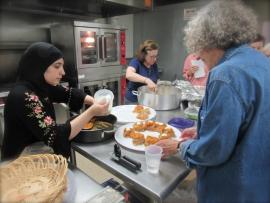
Members of Bet Am Shalom take a class in Afghan cooking taught by a refugee.
Over the last few years, Bet Am Shalom has organized educational programs for religious school students, teens and adults, bringing in a range of speakers, including an undocumented activist who arrived in the United States as a child. The congregation has raised funds for a local advocacy organization, El Centro Hispano. Its teens have repeatedly visited with unaccompanied immigrant minors living at a nearby nonprofit facility. Currently, the congregation is partnering with Sarah Lawrence College, serving lunch to participants in a summer camp program for immigrant families.
Bet Am Shalom also is working with HIAS, a historically Jewish organization that is one of the United States’ leading refugee resettlement agencies. Through a HIAS program, Bet Am Shalom is partnering with a nearby synagogue, Woodlands Community Temple, to resettle a family of six from Afghanistan. That’s involved raising some $40,000, forming a committee that meets weekly, and mobilizing dozens of volunteers who are helping the family find adequate work, while making arrangements for schools, day cares, doctors and dentists.
According to Rabbi Lester Bronstein, the immigration work has added a meaningful layer to members’ Jewish identities and involvement with the congregation. Bet Am Shalom’s efforts to welcome the stranger — a commandment issued some 36 times in the Torah — have made a material difference in the lives of many immigrants in Westchester County.
“This is ongoing, detailed work that requires consistent commitment, over years, of money and time—and that is great for our congregation,” said Bronstein. “Congregants are really coming through for one another and for our immigrant neighbors.”
Reconstructionist Movement raising its voice
Why are Bet Am Shalom and so many communities so committed to welcoming the stranger? One reason: Migration stories lie at the heart of the Jewish saga.
The Torah itself contains several key immigration stories, including Abram’s (in the book of Genesis, God hadn’t yet renamed him Abraham) journey from his homeland to the Exodus from Egypt. Countless times throughout history, Jews have been the strangers, forced to flee persecution. In the American context, the open-door policies from the 1880s to the 1920s ultimately led to the creation of the safest, most empowered Diaspora community ever known. Yet when that policy changed in the early 1920s, it proved disastrous for the Jews of Europe, who were denied a safe haven from Nazism.
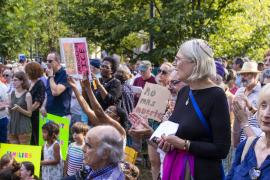
Reconstructionist rabbis and congregations were among the organizers of this protest against mistreatment of asylum seekers.
Immigration’s place as a central, polarizing issue in American politics certainly precedes 2016. Yet there seems little doubt that the controversial rhetoric and the “zero tolerance” policies of President Donald Trump have led to a sense of urgency to respond, particularly in the Jewish community.
Reconstructing Judaism, the central organization of the Reconstructionist movement, as well as the Reconstructionist Rabbinical Association (RRA), have made immigration among the highest priorities in terms of raising the movement’s voice in the public square. Take, for example, this joint statement from June 2018.
“As Jews, we recall our history as oppressed and wandering people who have sought refuge in many places over the centuries, including in the United States. We also recall our sacred texts that exhort us over and over again to welcome the stranger and to care for the immigrant in our midst. While we understand the need for safe and secure borders, we do not agree that immigration is by definition a threat to us or to our economy,” the statement reads.
“We Reconstructionist Jews see the erosion of welcome, the rule of law and due process, and the institution of anti-Muslim, anti-Latino and anti-immigrant policies as evidence of a severe moral decline. We call on Congress to enact real immigration reform, reopening the doors that this administration is attempting to slam shut. We call for the renewal of a clean Dream Act, allowing permanent immigration status for the hundreds of thousands of young adults brought to this country as children.”
Rabbi Deborah Waxman, Ph.D., president of Reconstructing Judaism, has made the call for more compassionate and sustainable immigration policy a cornerstone of her public writing and speaking. In August of last year, Waxman and Rabbi Elyse Wechterman, executive director of the RRA, traveled to San Diego and Tijuana on a trip jointly organized by HIAS and the Anti-Defamation League to bear witness, learn more about the plight of refugees and economic migrants, and brainstorm about how to collaborate on effective responses.
“I was deeply moved by the passion, conviction, effectiveness, resilience and compassion of the direct service providers and advocates we encountered. I was disturbed on an equal measure by the malice and dehumanization that seems to inform U.S. immigration policy and practice,” Waxman wrote in a column about the experience.
In March, Wechterman visited a New Mexico immigrant detention center with a delegation sponsored by HIAS and T’ruah, a rabbinic human rights organization. Several RRA members joined Wechterman on that trip, including the RRA president, Rabbi Seth Goldstein, as well as Rabbis Amy Joy Small, Susan Falk and Michael Swartz.
“Our visit left me with more questions than answers: When did seeking asylum — a right guaranteed under U.S. and international law — become criminalized behavior in the United States? And when did we do away with the guarantees of due process and the right to fair trials in our constitution?” Wechterman wrote.
Rather than give into paralysis or despair, Reconstructionist affiliates and rabbis are diving in, finding myriad ways to aid immigrants, refugees and asylum seekers while advocating for a more just and sustainable immigration system.

Three families, formerly refugees from Syria, who were sponsored by Congregation Dorshei Emet in Montreal, join committee members at a potluck brunch.
So far, 39 Reconstructionist affiliates, more than a third of all communities connected to Reconstructing Judaism, have signed on to HIAS’ Welcome Campaign. Tragically, on Oct. 27, 2018, in the worst instance of violence against Jews on American shores, Congregation Dor Hadash in Pittsburgh was reportedly targeted by a gunman because of its association with HIAS and participation in the National Refugee Shabbat. A total of 11 people were killed that day. The carnage raised concerns about rising levels of antisemitism. It has not, however, appeared to dim the commitment of Jewish communities to work on behalf of immigrants and refugees.
As part of their communities and as individuals, Reconstructionists have joined in demonstrations and advocated for improved conditions or the outright closure of immigrant detention centers. In recent weeks, Reconstructionists have played prominent roles in a series of protests around the country, organized by Never Again Action, that call for the closing of U.S. Immigrations and Customs Enforcement or ICE. Last month, 36 Jewish protesters were arrested while demonstrating outside a New Jersey Ice facility. On, on July 4th, 33 were arrested while disrupting a July 4 parade in Philadelphia. Reconstructionist Rabbinical College student Lizzie Horne coordinated that act of civil disobedience. On July 17, also in Philadelphia, Mishkan Shalom member Lynn Iser organized a group of elder activists gathered in extreme heat to demonstrate against unsafe conditions in ICE detention camps, particularly for children. Many have used their stories and voices to try to impact the legislative process. For example, in 2017, Rabbi Sonya Starr of the Columbia Jewish Congregation in Maryland spoke at a Howard County Council Hearing. Using her own grandparents’ immigration stories, she sought to convince the body to vote in favor of a bill declaring it a sanctuary county. Unfortunately, that vote fell short.
“Why do I tell you the story of my grandparents? I tell you my grandparents’ story because I am commanded as a Jew and as a human being to remember the lessons of the past,” Starr said in her testimony. “I am to remember what happened to the shiploads of people we turned back who died at sea or back at home. I am to remember that there are parts of this world that are so violent and terrifying, or so poor and hungry that we here in Howard County have no point of reference. I am to remember that the vast majority of immigrants to this country today just like 100 years ago are hardworking, dedicated, taxpaying, contributing members of society.”
Sponsoring Refugees in Canada
Perhaps nowhere are Reconstructionist communities having a larger impact in the lives of immigrants than in Canada.
Under Canadian immigration law, religious communities can officially sponsor refugee families. In 2015, at the height of the refugee crisis caused by the Syrian Civil War, Congregation Dorshei Emet in Montreal committed to sponsoring one Syrian refugee family, but in just a few weeks and with little publicity, the congregation raised enough money to sponsor four refugee families. In Canada, unlike in the United States, refugees automatically become permanent residents when they arrive in the country.
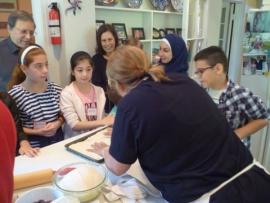
Children from Syria sponsored by Congregation Dorshei Emet learn to make pizza.
In the end, Dorshei Emet sponsored the resettlement of three Syrian families of Christian and Muslim backgrounds who’d been living in Lebanon and Saudi Arabia. A documentary film released last year called Salaam Montreal chronicled these efforts. Later this summer, the community will welcome a student refugee from Somalia, who will study at a local university.
“This is one of the most worthwhile projects I have ever worked on,” said Laurie Usheroff, co-chair of Dorshei Emet’s Refugee Sponsorship Committee. “As Jews, we relate to being refugees. We were not concerned about the families’ status or religion, whether Muslim or Christian. We were very open to sponsoring whoever needed help, no matter what their background. However, we did choose families who had close relatives in Montreal and found those connections very beneficial to their integration into Quebec society.”
Both Or Haneshemah in Ottawa and Congregation Darchei Noam in Toronto also have sponsored refugee families in recent years.
Sanctuary Synagogues
At least three Reconstructionist affiliates have declared themselves sanctuary congregations: Bnai Keshet in Montclair, N.J., Congregation Shaarei Shamayim in Madison, Wis., and Temple Beth Hatfiloh in Olympia, Wash. So far, no immigrants in danger of deportation have taken up residence at the three congregations.
Becoming a sanctuary synagogue involves the congregation functioning as a living space for an individual or family facing deportation, which could require costly renovations, or finding a suitable partner organization that has the space. Members of the community would have to commit to having a trained individual present. It also remains unclear whether a sanctuary congregation opens itself up to potential legal jeopardy.
The modern sanctuary movement has its roots in the medieval tradition of a house of worship as a place of refuge from the law. Seeking sanctuary is, in many ways, a desperate attempt for undocumented immigrants to remain in the United States when all other options appear lost.
According to Church World Service, an organization that assists refugees around the globe, nearly 50 immigrants are currently living in houses of worship the United States, up from five in 2016. At least one woman has lived in a North Carolina church for two years. These instances have called public attention to individual cases, as well as the general precariousness of life as an undocumented immigrant in America. Currently, U.S. Immigration and Customs Enforcement Policy prevents agents from taking undocumented immigrants into custody at sensitive sites such as houses of worship, schools and hospitals.
Back in November, at the Reconstructing Judaism convention, the rabbis from the three conventions took part in a panel discussion about sanctuary synagogues. As advertised in the convention program, the religious leaders discussed “how and why their congregations made their decisions, the opportunities and challenges in being a sanctuary congregation, and multiple ways synagogues can address issues of migrant justice.” (A separate panel, “Welcoming the Stranger: A Jewish Value and a Reconstructionist Practice,” also focused on the global refugee crisis.)
Rabbi Elliott Tepperman noted that Bnai Keshet raised $30,000 to make the building suitable for a family to live. The process stirred serious debate within the congregation and made a significant statement about the community’s values. While no one has claimed sanctuary at Bnai Keshet, two families seeking asylum have lived there temporarily. The first was from the Democratic Republic of Congo. Currently, a family originally from Honduras is living temporarily in Bnai Keshet’s building.
“Offering sanctuary is not a special legal status nor does it require breaking the law,” Tepperman said in a 2017 Rosh Hashanah sermon. “There is no legal loophole that allows congregations to offer special protections to undocumented immigrants. Rather, there is a long-standing policy of Immigration and Customs Enforcement, ICE, to avoid arrests on congregational property. In some cases, sanctuary buys time for the individual to seek a deferment or another resolution that will allow them to maintain their residency. Sometimes the public attention itself seems to open up new possibilities.”
Goldstein, of Temple Beth Hatfiloh, said his congregation’s initiative came as a response to its home city of Olympia, Wash., becoming a sanctuary city.
“We continue to make plans, prepare the space, train volunteers, develop plans,” Goldstein said recently. “In the meantime, we are moving forward with other ways to support immigrants, and we are in conversation with people who are doing support outside a detention center in Tacoma (about 30 miles north of us).
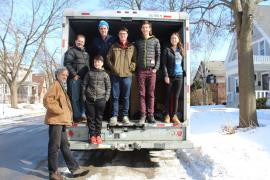
Volunteers from Shaarei Shamayim in Madison, Wis., bring supplies to an immigrant family.
Rabbi Laurie Zimmerman of Shaarei Shamayim told the audience that becoming a sanctuary congregation requires untold hours of planning and volunteer commitment, work, that, so far, hasn’t been needed. To become a sanctuary congregation, Shaarei Shamayim partnered with a local Unitarian congregation with which it shares ritual space.
“I love the idea of sanctuary,” said Zimmerman. Still, “a volunteer must be at the building with the person 24/7. I wonder if volunteer hours could be used in more productive ways.”
Zimmerman added that her community has also raised tens of thousands of dollars on behalf of a local advocacy organization, Voces de la frontera. Early in 2017, Shaarei Shamayim organized a Jewish Pledge of Solidarity, a campaign in which 200 Jews in Madison pledged to stand with their Latino and Muslim neighbors.
Zimmerman said she expects Reconstructionist communities will continue to find new ways to work for justice and compassion for newcomers to North America.“People have a real interest in responding to the times we live in, they are dark times and they want to find something constructive to do in so many crises,” said Zimmerman. “The American Jewish immigration story is very powerful for American Jews. The current detentions and deportations touch our hearts in an intense way because of our history.”

